This is a drawing of the evolution of the interior of a giant planet.
Click on image for full size
Image from: The New Solar System
How the Interior of Neptune Formed
The drawing shows a possible path in the evolution of the interior of giant planets. As the planets
drew material from the
solar nebula, bits of heavy, solid material accumulated inside the forming planet, as illustrated in figure A.
Once the planet finished forming, these heavy, solid bits of material fell into the center of the planet, as illustrated in figure B. The heavy elements of the planet made up a much smaller portion of the planet than the gaseous elements. The amount of gas and ice which make up Neptune depended upon where Neptune was in the primordial cloud.
Eventually, the heavy, solid material at the center solidified into a core, as illustrated in figure C.
Leftover heat from this process of Neptune's forming may still influence the motions in Neptune's atmosphere.
You might also be interested in:
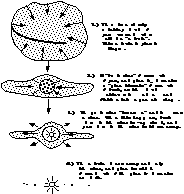
The solar system contracted, or shrank together, out of a spinning cloud of hydrogen and helium gas. This spinning cloud had a certain amount of momentum, which caused it to flatten, somewhat the way a
...more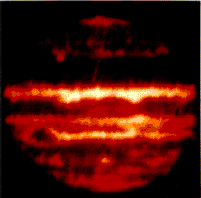
In astronomy, it is a usual procedure to calculate the luminosity of a star, and this calculation indicates the energy and the temperature of the star. When the luminosity of the outer planets was calculated,
...more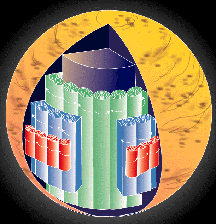
Motions, or currents in the interior of a gas-giant planet such as Neptune may be very different from the motions typical of the Earth's interior. A second idea for the motions in the interior of a gas-giant
...more
Motions in the interior of a planet helps to carry heat from the core to the planet's surface. The drawing to the left illustrates a kind of global motion that is typical of motions in the atmosphere as
...more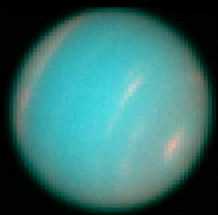
This image shows the new Great Dark Spot of Neptune, which was discovered using the Hubble Space Telescope. The image shown here, shows a "hole" in the clouds of Neptune in pink, in the northern hemisphere,
...more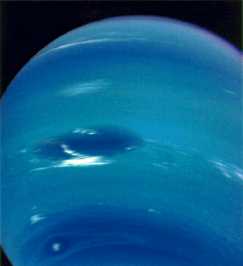
Atmospheres of the giant planets have definitely evolved from their formation out of the primitive solar nebula. How much they have evolved remains to be seen, however. Because of their enormous gravity,
...more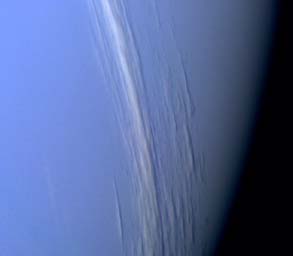
This image shows some cirrus clouds, extending for many kilometers across the disc of Neptune. These clouds are somewhat high up, for they can be seen to cast shadows on the lower clouddeck, which is 35
...more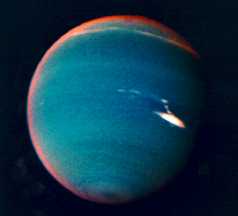
This image of Neptune uses false colors to bring out the hazes of smog, which can be seen in red along the limb of Neptune, at the edge of the picture. These hazes of smog are found at very high altitudes,
...more















